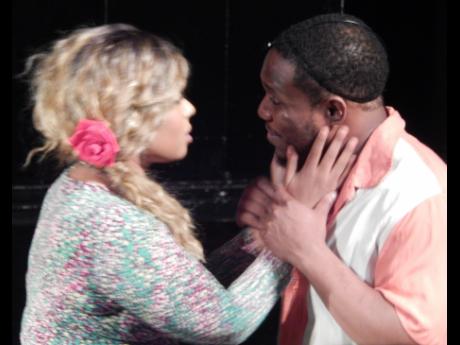For the Reckord | 'Jamaica' heads to Harlem Repertory Theatre in New York
Jamaican theatre-lovers in New York City over the next seven months might be tempted to attend a musical called Jamaica at the Tato Laviera Theatre, 240 East 123rd Street, Harlem.
They might well like the Harlem Repertory Theatre's light, breezy production, but they'll find that it's really not about Jamaica. Some misleading advertising is taking place.
The musical is set on the fictitious Pigeon Island and contains only superficial references to this country. In the printed programme, the dot above the "i" in the name "Jamaica" is represented by a tiny image of the country's flag; the phrase "Jamaica rum" and the word "Kingston" are used once or twice; and a couple of the characters occasionally appear to mimic a Jamaican accent.
Additionally, like Jamaica, Pigeon Island is in the Caribbean Sea and depends a lot on tourism and fishing, but it also has a hazardous Devil's Cove which was once the centre of a pearl-fishing industry.
However, so many lives were lost in the process, the diving ceased. Enter temptation in the form of a rich, middle-aged American, Joe Nashua (played by Daniel Fergus Tamulonis), who offers lots of money to those who will start pearl diving again.
Some do, but one who doesn't is the young fisherman Koli (Jason Johnson), the lead male character. He wants success by staying on the island and fishing, but the woman he loves, Savannah (Taylor-Rey Rivera), longs for the bright lights and wealth of New York City which Joe says he can give her.
A SIMPLE STORY IDEA
The conflicts that would arise from this simple story idea are obvious but the director-choreographer, Keith Lee Grant, finds more than the average viewer probably will. In the printed programme he writes of "hard-hitting and cynical sub-plots addressing racism, classicism and the exploitation that inevitably accompanies capitalism. It is Joe Nashua who brings greed and consumerism to Pigeon Island, threatening to destroy the lives of its citizens ... (who) are corrupted by the urban values that Joe espouses."
He sees the storm in the second act as "a metaphor for the painful processes of emotional evolution (change) that the principal characters Savannah, Koli, Ginger (Barbyly Noel), and Cicero (Chris Price) experience." In the storm and pre-storm period, he sees the themes of "power, greed, love and revelations," and after the storm comes "consternation and forgiveness."
Grant's clever analysis of the story is matched by his excellent direction, which fluidly moves the cast around the stage and often into the audience. The set is mostly moveable white multipurpose boxes.
There is fine lighting design (by Ervin Vasquez), costume design (by Mary Myers) and animations (by Edward Corcino). All three, in their different ways, make the production bright and colourful, but audiences will particularly love Corcino's animations. Projected on two large screens above the stage throughout the show, in words, photographs and drawings (some animated), they humorously illustrate the dialogue and lyrics.
The lively music for Jamaica, which is played by an accomplished live band, was written by Harold Arlen, with lyrics by E.Y. Harburg, and book by E.Y. Harburg and Fred Saidy. The musical premiered at the Imperial Theatre in New York in October 1957, and the current production celebrates both the show's 60th anniversary and the 100th anniversary of the birth of its original lead actress, Lena Horne, who went on to become a renowned entertainer.


